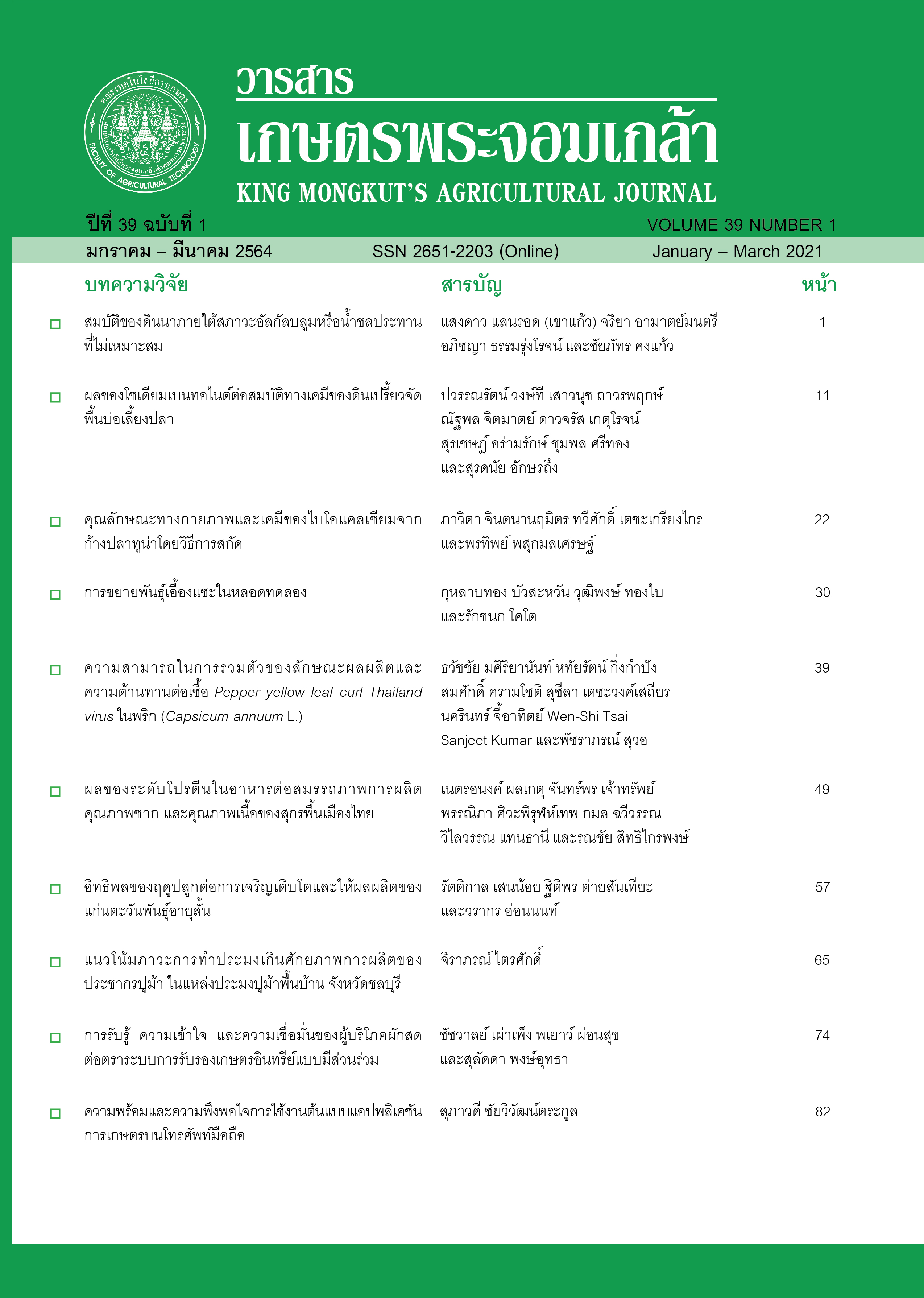Physicochemical Characteristics of Bio-Calcium Powder from Tuna Bones by Extraction Methods
Main Article Content
Abstract
Tuna bone is a by-product of tuna processing, which is a growth industry that has attracted more manufacturers that produce canned tuna products. The objective of this research was to study the extraction of bio-calcium powder from tuna bone using the alkaline method. This method is an effective technique to get rid of organic substances from the bone. This method produces a decrease in the quantity of protein and fat in extracted bio-calcium powder, and a corresponding increase in the amount of ash. One positive effect of the reduction in fat content is lower susceptibility to oxidative rancidity and thus shelf life extension. The bio-calcium powders are white in color and without any undesirable fishy odor. In this study, bio-calcium powder was extracted from tuna bone via the following four methods: the alkaline (AK) method, the heat-treated alkaline (HAK) method, the heat-treated alkaline with fat removal and bleaching supplementary method (HAK-FB), and the alkaline with fat removal supplementary (AK-F) method. The results showed that bio-calcium powder from tuna bone was rich in calcium (18.74%-21.45%) and phosphorus (9.46%-10.28%). The proximate and LAB color results of the bio-calcium powder indicated that the AK-F method obtained a higher protein (29.94%), lower fat (0.84%), lower b* value (12.48%) and lower b* value than did the HAK-FB method (P<0.05). Besides, this method produced bio-calcium powder of satisfactory physicochemical characteristics. Furthermore, the powder performed well in sensory evaluations.
Article Details
King Mongkut's Agricultural Journal
References
กระทรวงพาณิชย์. 2561. สินค้าออกสำคัญ 10 อันดับแรก. การค้าไทย. http://www2.ops3.moc.go.th/ (5 กรกฎาคม 2561).
ผกาวดี ภู่จันทร์. 2559. ผลของการเสริมแคลเซียมจากกระดูกปลาสลาดต่อการยอมรับของผลิตภัณฑ์คุกกี้. Rajabhat Journal of Sciences, Humanities & Social Sciences 17(1): 54-61.
Abbey, L., Amengor, M. G., Atikpo, M. O., Atter, A., and Toppe, J. 2017. Nutrient content of fish powder from low value fish and
fish byproduct. Food Science and Nutrition 5(3): 374-379.
Association of Official Chemists (AOAC). 2016. Official methods of analysis of Association of Official Analytical Chemists. 20th ed. Rockville, Maryland: Association of Official Analytical Chemists International.
Benjakul, S., and Karnjanapratum, S. 2018. Characteristics and nutritional value of whole wheat cracker fortified with tuna bone
bio-calcium powder. Food Chemistry 259: 181-187.
Benjakul, S., Mad-Ali, S., and Sookchoo, P. 2017. Characteristics of bio-calcium powders from pre-cooked tongol (Thunnus tonggol) and yellowfin (Thunnus albacores) tuna bones. Food Biophysics 12: 412-421.
Beto, J. A. 2015. The role of calcium in human aging. Clinical Nutrition Research 4: 1-8.
Nemati, M., Huda, N., and Ariffin, F. 2017. Development of calcium supplement from fish bone wastes of yellowfin tuna
(Thunnus albacares) and characterization of nutritional quality. International Food Research Journal 24(6): 2419-2426.
Sayana, K. S., and Sirajudheen, T. K. 2017. By-product from tuna processing wastes-an economic approach to coastal waste management. In Proceedings of the International Seminar on Coastal Biodiversity Assessment. pp. 411-420.
Talib, A., Suuprayitno, E., Aulani, A. M., and Hardoko. 2014. Physico-chemical properties of Madidihang (Thunnus albacares Bonnaterre) fish bone flour in Ternate, North Moluccas. International Journal of Biosciences 4(10): 22-30.


